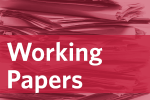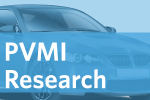
We study the association of spending per employee with startup firm survival. Our theory model posits that entrepreneur’s knowledge defines the complex decision process of combining human and non-human inputs to increase firm value. …Read More

We study the association of spending per employee with startup firm survival. Our theory model posits that entrepreneur’s knowledge defines the complex decision process of combining human and non-human inputs to increase firm value. …Read More

The extent to which local incentive policies (such as subsidies and tax credits) are effective at spurring new centers of innovation, and whether these incentives induce overall productivity growth or just a shift of production from one region to another, is the subject of this proposal.…Read More

In 2011, California Governor Jerry Brown recognized several of the state’s existing firm incentive policies aimed at catalyzing innovative activity in the state, to be ineffectual, citing poor incentive design.…Read More

We study how collocation — geographic clustering of business establishments owned by the same parent company — influences the productivity of establishments over time.…Read More

The Patient-Centered Medical Home (PCMH) is a widely-implemented model for improving primary care, emphasizing care coordination, information technology, and process improvements. However, its treatment as an undifferentiated intervention obscures meaningful variation in implementation. …Read More

Analyzing the comprehensive 35-year patent data set associated with the Detroit auto cluster we confirm that innovation in clusters can increase in spite of a long-term decline in manufacturing activity. The “stickiness” of local knowledge is sustained by: (i) increasing technological specialization at the local level and (ii) growing connectedness to global centers of excellence.…Read More

Insight into the growth (or shrinkage) of “knowledge communities” of authors that build on each other’s work can be gained by studying the evolution over time of clusters of documents. We cluster documents based on the documents they cite in common using the Streemer clustering method, which finds cohesive foreground clusters (the knowledge communities) embedded in a diffuse background.…Read More

Cohesive intellectual communities called “schools of thought” can provide powerful benefits to those developing new knowledge, but can also constrain them. We examine how developers of new knowledge position themselves within and between schools of thought, and how this affects their impact.…Read More

A useful level of analysis for the study of innovation may be what we call “knowledge communities” — intellectually cohesive, organic inter-organizational forms. Formal organizations like firms are excellent at promoting cooperation, but knowledge communities are superior at fostering collaboration — the most important process in innovation.…Read More